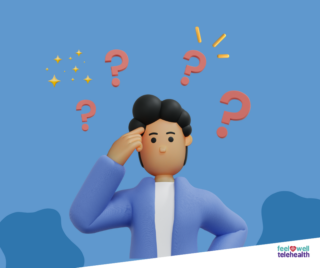The scariest symptoms you DON’T actually need to see a doctor for!
 Is It Serious? Know when you can safely treat your symptoms at home and when you can’t.
Is It Serious? Know when you can safely treat your symptoms at home and when you can’t.
1. Elevated blood pressure: Don’t worry if it’s just one reading after a stressful event. If you haven’t checked your BP in a while and then see the higher number 140’s or 150’s, if you don’t have any other symptoms, don’t panic. Rest for 20 minutes and measure it again, if it goes back to 120’s, just keep an eye on it, measure it a few times a week and mention it to your doctor on your next appointment. You might have pre-hypertension, and some lifestyle modification can help you delay the need for medication.
When to see your doctor: If you get high reading several times a week, make an appointment with your doctor ASAP. Untreated high blood pressure is called the silent killer. It increases your risk of heart attack and stroke. If your blood pressure is over 180 the higher number or the lower number is over 110, this is a medical emergency, seek help immediately.
2. Low blood pressure: If you don’t have any symptoms, it might be normal for you to have low blood pressure with higher number in 90’s or 100’s. Make sure you have your annual physical including bloodwork to rule out other possible causes.
When to see your doctor: If you feel lightheaded or have heart palpitations, then you need to see your doctor ASAP.
3. High heart rate: If your heart rate is over 100 beats per minute during or after exercising it’s normal, or if you have had a scary close call in traffic, it’s normal. Too much caffeine, energy drinks, or dehydration can cause your heart to race. Correct what is causing it.
When to see your doctor: If you also feel chest pain, difficulty breathing or passing out this is a medical emergency.
4. Low heart rate: If your heart rate is below 60 beats per minute it’s considered bradycardia, but not necessarily abnormal. If you’re an athlete or practice high intensity exercises a low heart rate is normal.
When to see your doctor: If your heart rate is below 60 and you feel lightheaded or passing out you need help ASAP.
5. Diarrhea: If you don’t have abdominal pain, nausea, vomiting or any other symptoms you may be okay to be treated at home. It may be caused by food intolerance or a stomach virus. Make sure you’re able to hydrate yourself well.
When to see your doctor: If the diarrhea is not getting better and you develop other symptoms such as abdominal pain, vomiting, fever, blood in your stool, you need immediate attention as it may indicate more serious conditions.
6. Difficulty breathing: If you have trouble breathing and
a) If you have a history of asthma, ask yourself if you have been taking your medications as prescribed. If you have a rescuer inhaler or a nebulizer, use it and see if you feel better.
When to see your doctor: If your difficulty breathing doesn’t get better within minutes or you have severe wheezing and cough, rapid breathing, chest tightness or pressure, difficulty talking, pale, sweaty. It’s time to go to ER you may have an asthma attack and need medical attention immediately. Make sure you use your medications as prescribed and avoid triggers for asthma attack.
b) If you have a history of allergies and your nostrils are stuffed it may be difficult to breathe, use a nasal spray or an antihistamine OTC to help you breath better.
When to see your doctor: If your allergy is not controlled with OTC meds you may need prescription meds and see an allergy specialist.
7. Headache with nausea and vomiting, light and sound sensitivity and you have a history of migraines make sure you treat the headache before it gets worse. Stress can cause tension headaches; dehydration and lack of sleep, caffeine withdrawal can also cause headaches. Stress-reducing strategies, hydration and good night sleep may help ease the pain.
When to see your doctor: If your headache is debilitating and not getting better you need further assessment. If you have the worst headache of your life, you should go to ER immediately.
Go to ER immediately or call 911 if you have:
- Chest pain, pain in the jaw, neck, back, one or both arms and shoulders
- Severe shortness of breath
- Trouble walking, speaking, or understanding
- Facial drooping or numbness
- Weakness of arms or legs
- Loss of control of bladder or bowels
- Loss of consciousness or confusion
- Severe bleeding
- Intense abdominal pain
- Fall with head concussion
This isn’t a comprehensive list of severe symptoms you should go to ER or see a doctor, use your judgment, and do not delay treatment.


